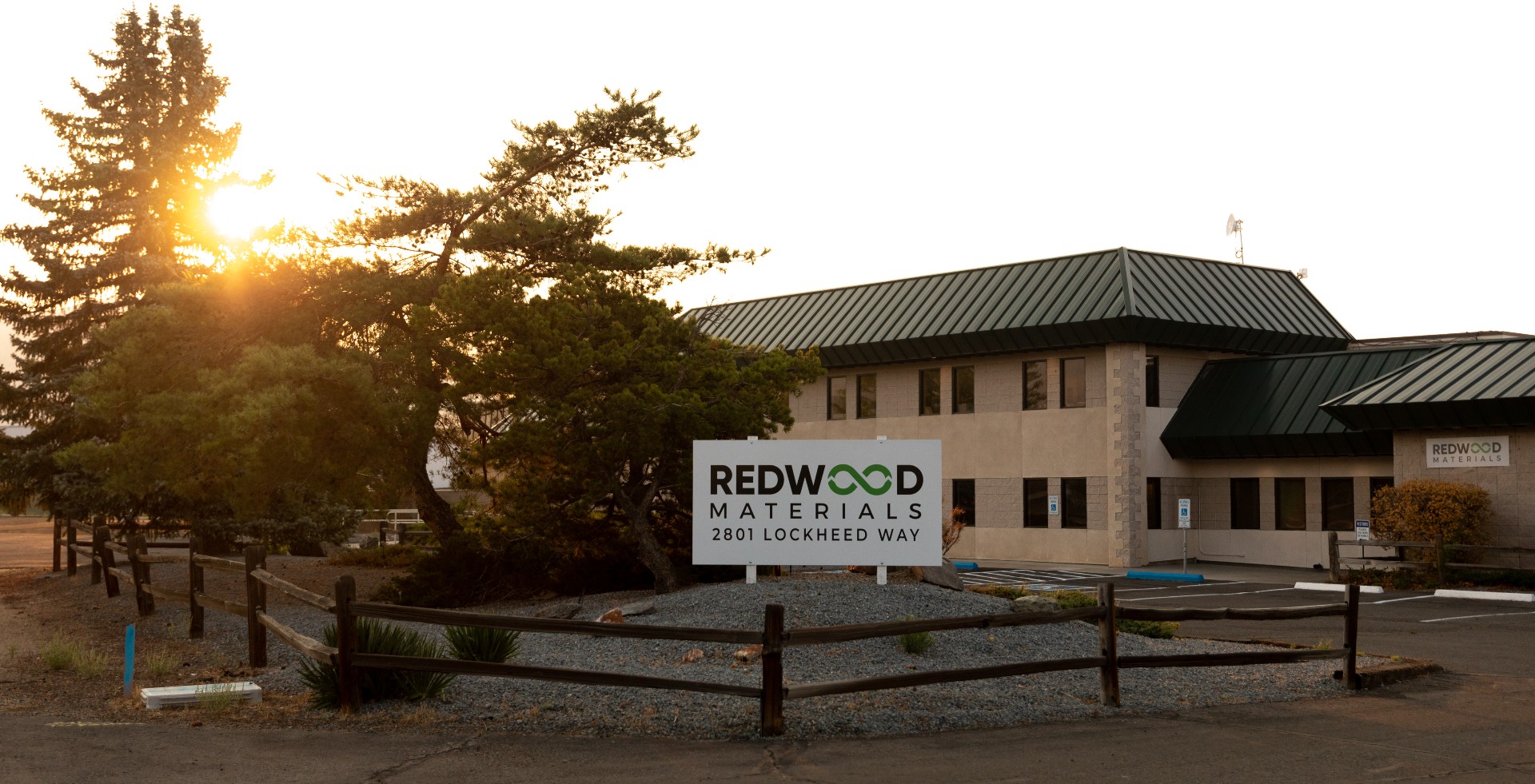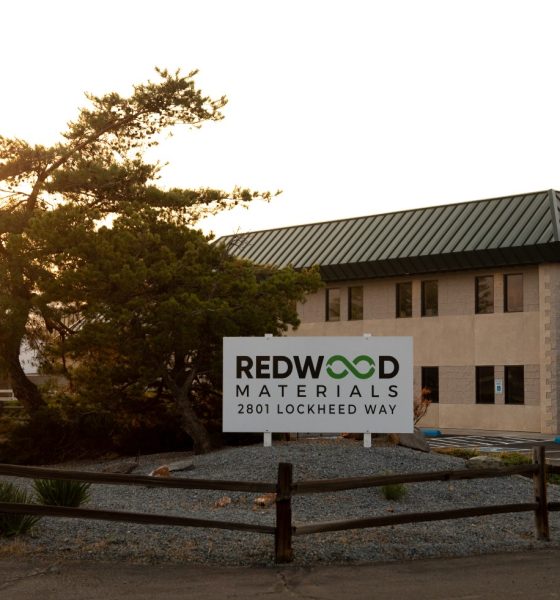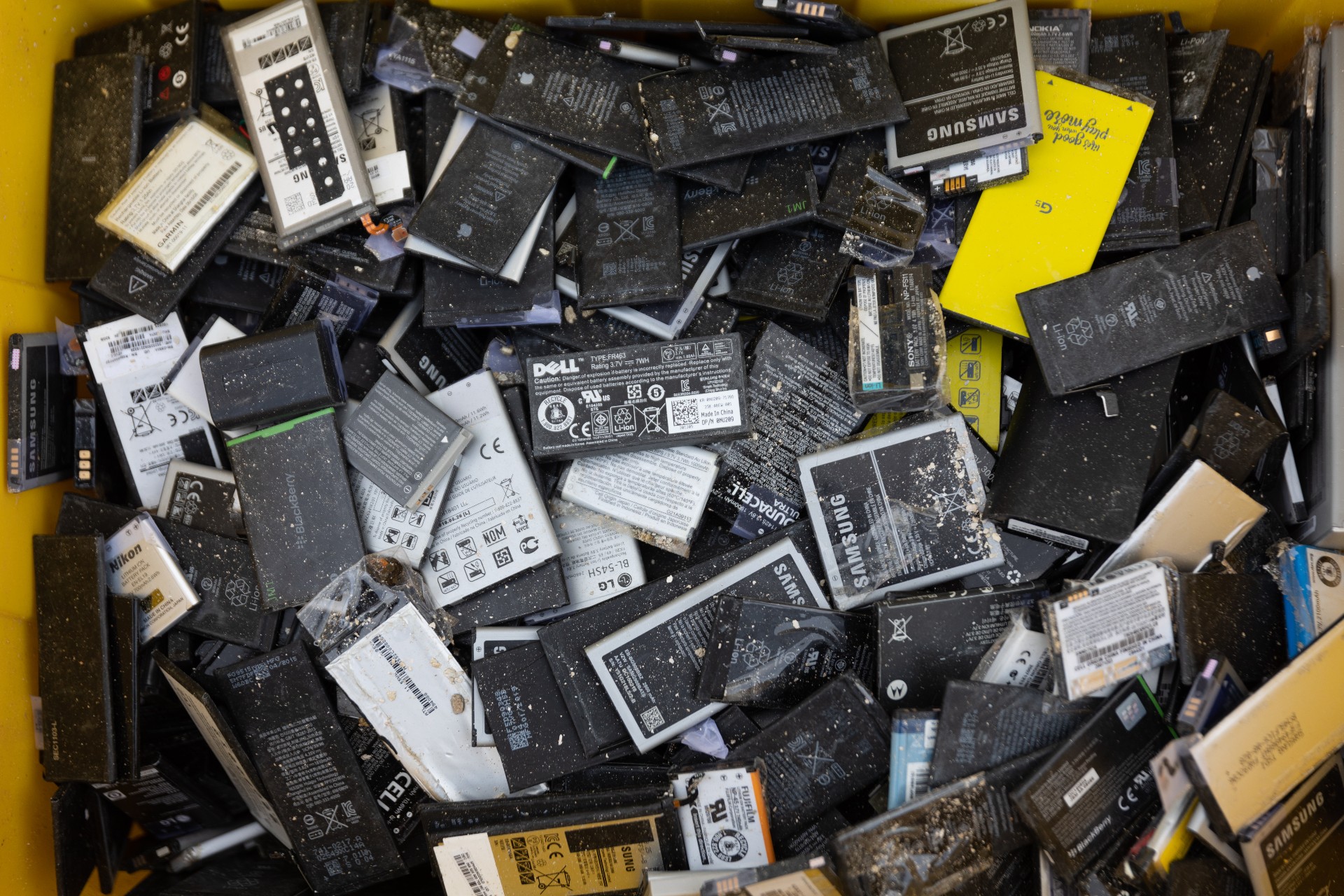

News
Redwood Materials takes on solar panel recycling in new partnership with ERI
Former Tesla executive JB Straubel’s battery recycling venture, known as Redwood Materials, has reached an exclusive partnership with Electronic Recyclers International, also known as ERI, to recycle batteries and solar panels. The recycling of solar panels has not yet been tackled by Redwood or ERI.
ERI is North America’s largest electronics consolidator, and Redwood’s partnership will expand the venture’s recycling output. ERI will give Redwood access to the largest supply of electronic waste, activating its ability to recycle batteries into materials that can be used to build new EVs and other clean energy products.
The partnership will give JB Straubel a chair on ERI’s board, as Redwood made “a significant strategic investment in ERI,” Redwood spokespeople told Teslarati. Straubel’s main venture following his departure from Tesla was to assist in the recycling portion of the EV supply chain. It ultimately landed the company a partnership with Envision AESC, the company that manufactures cells for the Nissan Leaf and Panasonic, Tesla’s battery supplier at the Sparks, Nevada Gigafactory.
Redwood’s expansion into ERI’s e-waste will give the recycling entity access to solar panels, a new business initiative that the company has not yet been involved with. As a part of the deal, all of ERI’s solar panels will be shipped to Redwood for recycling purposes.
Credit: Redwood Materials
“Redwood is focused on steadily and relentlessly improving recycling economics with technology to reduce the cost of materials and create a circular supply chain to power a sustainable future,” Straubel said. “By partnering with ERI, we’ll be able to ensure the largest supply of e-waste batteries in the US is recycled into materials to produce new EVs and clean energy products.”
The partnership also launched a “unique, unprecedented partnership that will tackle the ‘last mile’ of electronic recycling: solar panels and batteries,” ERI’s Co-Founder and Executive Chairman John Shegerian said. “And it will be done in a radically transparent, end-to-end closed-loop manner where elements – from cobalt, nickel, copper, lithium – will be kept out of landfills, responsibly recycled, and put back into new products. We are incredibly excited to be entering into this strategic partnership with Redwood Materials.”
As demand for metals critical for EV batteries’ operation increases, recycling efforts are taking center stage. The overwhelming shift in demand for EVs is driving the cost of metals like cobalt, nickel, copper, and lithium to all-new levels. EV companies, like Tesla, are working to increase battery production both in-house and through third-party manufacturers. Elon Musk offered a “giant contract” to nickel suppliers, a request that several mining companies answered. However, there could always be more, and in the sustainable spirit of EV production, recycling is becoming a more sought-after process to obtain battery materials.
Shegerian believes the new collaboration will revolutionize the e-waste recycling industry. “The strategic partners with whom we work to achieve Circular Economy goals are not only our downstream partners, they are investors in our company and sit on our board. This is a paradigm that is unparalleled in the recycling industry throughout the world.”

Elon Musk
Elon Musk confirms xAI’s purchase of five 380 MW natural gas turbines
The deal, which was confirmed by Musk on X, highlights xAI’s effort to aggressively scale its operations.

xAI, Elon Musk’s artificial intelligence startup, has purchased five additional 380 MW natural gas turbines from South Korea’s Doosan Enerbility to power its growing supercomputer clusters.
The deal, which was confirmed by Musk on X, highlights xAI’s effort to aggressively scale its operations.
xAI’s turbine deal details
News of xAI’s new turbines was shared on social media platform X, with user @SemiAnalysis_ stating that the turbines were produced by South Korea’s Doosan Enerbility. As noted in an Asian Business Daily report, Doosan Enerbility announced last October that it signed a contract to supply two 380 MW gas turbines for a major U.S. tech company. Doosan later noted in December that it secured an order for three more 380 MW gas turbines.
As per the X user, the gas turbines would power an additional 600,000+ GB200 NVL72 equivalent size cluster. This should make xAI’s facilities among the largest in the world. In a reply, Elon Musk confirmed that xAI did purchase the turbines. “True,” Musk wrote in a post on X.
xAI’s ambitions
Recent reports have indicated that xAI closed an upsized $20 billion Series E funding round, exceeding the initial $15 billion target to fuel rapid infrastructure scaling and AI product development. The funding, as per the AI startup, “will accelerate our world-leading infrastructure buildout, enable the rapid development and deployment of transformative AI products.”
The company also teased the rollout of its upcoming frontier AI model. “Looking ahead, Grok 5 is currently in training, and we are focused on launching innovative new consumer and enterprise products that harness the power of Grok, Colossus, and 𝕏 to transform how we live, work, and play,” xAI wrote in a post on its website.
Elon Musk
Elon Musk’s xAI closes upsized $20B Series E funding round
xAI announced the investment round in a post on its official website.

xAI has closed an upsized $20 billion Series E funding round, exceeding the initial $15 billion target to fuel rapid infrastructure scaling and AI product development.
xAI announced the investment round in a post on its official website.
A $20 billion Series E round
As noted by the artificial intelligence startup in its post, the Series E funding round attracted a diverse group of investors, including Valor Equity Partners, Stepstone Group, Fidelity Management & Research Company, Qatar Investment Authority, MGX, and Baron Capital Group, among others.
Strategic partners NVIDIA and Cisco Investments also continued support for building the world’s largest GPU clusters.
As xAI stated, “This financing will accelerate our world-leading infrastructure buildout, enable the rapid development and deployment of transformative AI products reaching billions of users, and fuel groundbreaking research advancing xAI’s core mission: Understanding the Universe.”
xAI’s core mission
Th Series E funding builds on xAI’s previous rounds, powering Grok advancements and massive compute expansions like the Memphis supercluster. The upsized demand reflects growing recognition of xAI’s potential in frontier AI.
xAI also highlighted several of its breakthroughs in 2025, from the buildout of Colossus I and II, which ended with over 1 million H100 GPU equivalents, and the rollout of the Grok 4 Series, Grok Voice, and Grok Imagine, among others. The company also confirmed that work is already underway to train the flagship large language model’s next iteration, Grok 5.
“Looking ahead, Grok 5 is currently in training, and we are focused on launching innovative new consumer and enterprise products that harness the power of Grok, Colossus, and 𝕏 to transform how we live, work, and play,” xAI wrote.
Investor's Corner
Tesla gets price target bump, citing growing lead in self-driving

Tesla (NASDAQ: TSLA) stock received a price target update from Pierre Ferragu of Wall Street firm New Street Research, citing the company’s growing lead in self-driving and autonomy.
On Tuesday, Ferragu bumped his price target from $520 to $600, stating that the consensus from the Consumer Electronics Show in Las Vegas was that Tesla’s lead in autonomy has been sustained, is growing, and sits at a multiple-year lead over its competitors.
CES 2026 validates Tesla’s FSD strategy, but there’s a big lag for rivals: analyst
“The signal from Vegas is loud and clear,” the analyst writes. “The industry isn’t catching up to Tesla; it is actively validating Tesla’s strategy…just with a 12-year lag.”
The note shows that the company’s prowess in vehicle autonomy is being solidified by lagging competitors that claim to have the best method. The only problem is that Tesla’s Vision-based approach, which it adopted back in 2022 with the Model 3 and Model Y initially, has been proven to be more effective than competitors’ approach, which utilizes other technology, such as LiDAR and sensors.
Currently, Tesla shares are sitting at around $433, as the company’s stock price closed at $432.96 on Tuesday afternoon.
Ferragu’s consensus on Tesla shares echoes that of other Wall Street analysts who are bullish on the company’s stock and position within the AI, autonomy, and robotics sector.
Dan Ives of Wedbush wrote in a note in mid-December that he anticipates Tesla having a massive 2026, and could reach a $3 trillion valuation this year, especially with the “AI chapter” taking hold of the narrative at the company.
Ives also said that the big step in the right direction for Tesla will be initiating production of the Cybercab, as well as expanding on the Robotaxi program through the next 12 months:
“…as full-scale volume production begins with the autonomous and robotics roadmap…The company has started to test the all-important Cybercab in Austin over the past few weeks, which is an incremental step towards launching in 2026 with important volume production of Cybercabs starting in April/May, which remains the golden goose in unlocking TSLA’s AI valuation.”
Tesla analyst breaks down delivery report: ‘A step in the right direction’
Tesla has transitioned from an automaker to a full-fledged AI company, and its Robotaxi and Cybercab programs, fueled by the Full Self-Driving suite, are leading the charge moving forward. In 2026, there are major goals the company has outlined. The first is removing Safety Drivers from vehicles in Austin, Texas, one of the areas where it operates a ride-hailing service within the U.S.
Ultimately, Tesla will aim to launch a Level 5 autonomy suite to the public in the coming years.








